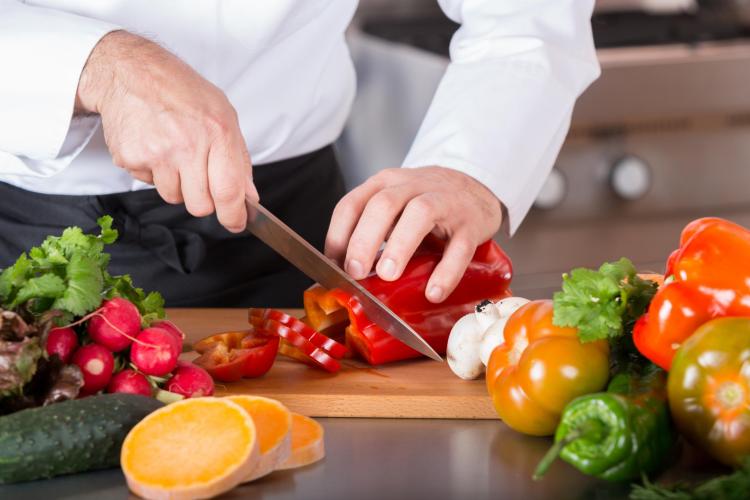Food handling practices


Food labeling and storage
‘Best before’ or ‘use by’ – what’s the difference?
Use by date must be indicated on foods that should be used quickly. After ‘use by’ date has passed the product must not be used or sold in the stores. Even if the product still smells and tastes normally, it may be hazardous for health. Storage instructions should be strictly kept for products with ‘use by’ date indicated on the label. Otherwise, the products may deteriorate quicker than the label indicates.
‘Best before’ date must be indicated on products that are safe to eat even after the recommended date has passed. Such products include, for example, canned, dried and frozen foods. ‘Best before’ date indicates for how long the product will retain its original qualities if stored correctly. Such products may still be consumed after ‘best before’ date, but some of the product qualities (like texture and taste) may change.
Perishable and non-perishable foods
Foods can be divided into two groups based on how perishable they are:
- Perishable foods typically include such foods as fresh and processed meat, fresh, salted and smoked fish, poultry, milk, ice cream, sour cream, cheese, eggs, processed meat, pastries and cakes, ready to eat food packages, frozen foods, etc.
Most perishable foods must be stored in refrigerator.
- Long-lasting foods include canned products, spices, sugar, dried beans. They can be stored without refrigerator for longer than a year. However, storage instructions specified on the packaging should be followed.
Certain types of foods may be regarded as semi-perishable if they can stay usable up to one year. Such foods include, for example, grain products, dried fruits and flour.
Post contamination – when contaminants are transferred to a product, which already has been cooked (undergone heat treatment).
Cross contamination – when contaminants are transferred from one product to another, due to poor hand hygiene or via contaminated utensils.
Food storage
Proper storage ensures the safety of food consumption. Storage facilities should differ for different types of foods.
Dry food storage should be dry, cool, clean and bright. Good ventilation should be provided. Open packages should be stored in sealed containers. Goods should be placed on the shelves, not on the floor.
Vegetable storage should be well ventilated and clean. Vegetables and fruits should be removed from packaging and stored on the shelves with good air circulation. Unwashed vegetables should be stored separately from prewashed.
Refrigerated storage
Raw meat, fish and poultry and pre-cooked or uncovered perishable foods should be stored separately to avoid cross-contamination. It is important not to overload the refrigerator with food, as this will prevent the circulation of cool air. Hot food should be cooled down and covered before it is placed in refrigerator. Food should not be stored in refrigerator for too long. Refrigerator should be defrosted and cleaned regularly to avoid microbial growth and cross-contamination.
Freezer storage
The temperature in freezer storage should be maintained at or below -18°C. Frozen food deliveries should be allocated to freezer storage without delay. Thawed frozen food must not be refrozen. Foods allocated to freezer should be wrapped and protected form cross-contamination. Freezer should not be overloaded with food.
The Decree on Food Premises determines the highest allowed temperatures for food storage as follows:
Milk and cream +6 °C
Easily perishable milk-based products that involve at least pasteurisation or similar treatment +8 °C
Perishable foods, cut vegetables, sushi +6 °C
Live shellfish and oysters +6 °C
Minced meat +4 °C
Salted and cold smoked fish and seafood, vacuum or gas packed fish +3 °C
Fresh fish and seafood, cooked shellfish +2 °C
Meat, organs, fish products (not mentioned above) +6 °C
Frozen foods -18 °C
Heat treatment methods
Based on the cooking temperature several heat treatment methods can be outlined.
Parboiling is a method of boiling food in the water for a relatively short time, so that the food is only partially cooked. Parboiling typically kills most types of reproductive bacteria, moulds and yeasts from food surface. As a result of parboiling the food is partially soft, but not cooked through.
Pasteurisation involves heating a product to +60 - +95°C. This heat treatment method will kill reproductive bacteria cells, but not bacterial spores. Pasteurisation is commonly used on milk and milk products, when milk is heated to 72°C for 15 seconds. Pasteurised products must be stored refrigerated. Pasteurisation is used also in beer and wine production.
Cooking refers to heating food up to +70 - +100 °C. Such treatment will kill reproductive bacteria (except bacterial spores), moulds, yeasts and viruses. However, cooking does not eliminate toxins that microbes have already produced.
Sterilizing is another heat treatment method when ultra high temperature (UTH) is used to kill bacteria and bacterial spores. In this case a product is heated to about +135 °C. Commercially sterilized products can be stored in room temperatures, if the packaging is unopened.
Canning is a type of food preservation when the canned product is heated to about +120 °C. Canning kills bacteria and bacterial spores. After such treatment canned products can be stored at room temperatures and preserve their original qualities for several years, if unopened.
Freezing and industrial deep-freezing
When food is frozen to below -18 °C, microbes are not killed, but freezing prevents them from multiplying. As soon as the food has thawed, microbes will start being active again. Therefore, thawed products must be kept refrigerated and consumed quickly.
Industrial deep-freezing requires special equipment where the products are treated with the temperatures below - 20 °C. Just like with regular freezing, industrial deep-freezing does not kill microbes, but their multiplication is hindered.
